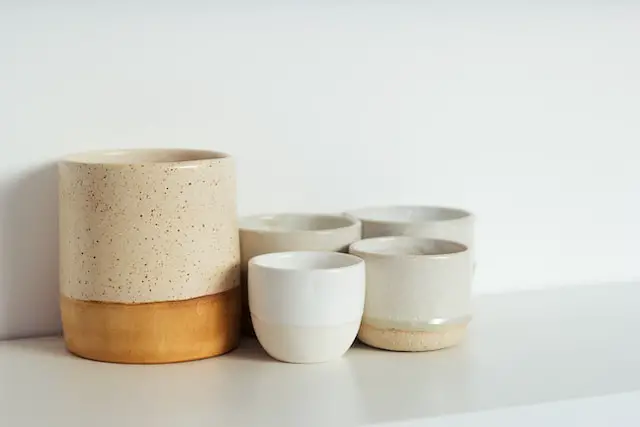Exploring the Distinct Properties and Everyday Applications
Ceramics and glasses possess distinct properties that make them suitable for various applications. Ceramics are crystalline and have high melting temperatures, while glasses are amorphous and soften upon heating without melting. In this article, we will delve into the characteristics and uses of ceramics and glass, and determine which material is better suited for different purposes.
Ceramics and Glass: An Overview
- Crystalline vs. Amorphous: Ceramics exhibit a crystalline molecular structure, while glass is non-crystalline. This fundamental difference affects their physical properties and behavior.
- Melting Points: Ceramics have high melting temperatures, making them resistant to heat. On the other hand, glass softens upon heating without reaching a distinct melting point.
- Odor and Flavor Resistance: Both ceramic and glass mugs are resistant to trapping smells or flavors, ensuring a fresh and uncontaminated drinking experience.
- Inert and Safe: Both ceramics and glass are generally inert materials, meaning they do not react chemically with other substances. They are considered safe for everyday use.
- Toxic Glazes: It’s important to note that some ceramic glazes may contain toxic substances, which can be a cause for concern. Consumers should ensure the glazes used on ceramic products are food-safe.
Strength and Durability
- Ceramic Strength: Ceramics, by nature, are generally stronger than glass. Their crystalline structure lends them enhanced resistance to mechanical stress and breakage.
- Glass Fragility: While glass is more prone to breaking compared to ceramics, advancements in glass manufacturing techniques have led to the development of stronger and more durable glass varieties.
Cost and Manufacturing Processes
- Cost Considerations: Ceramics are typically more expensive than glass due to the complexity of their manufacturing processes. Crafting ceramics often involves intricate shaping, firing, and glazing techniques.
- Glass Manufacturing: Glass, although generally less expensive, requires specific manufacturing methods such as melting and shaping through techniques like blowing or molding.
Everyday Applications
Ceramic Applications: Ceramics find a wide range of everyday applications, including:
- Cookware: Ceramic pots, pans, and dishes are valued for their excellent heat retention and even heat distribution.
- Tableware: Ceramic plates, bowls, and mugs are popular due to their durability and aesthetic appeal.
- Construction: Ceramics are used in the production of tiles, bricks, and sanitaryware due to their water and chemical resistance.
- Electronics: Ceramics play a vital role in electronic components such as capacitors, resistors, and insulators.
- Dental and Medical: Ceramics are used in dental prosthetics, implants, and medical devices due to their biocompatibility.
Glass Applications: Glass is equally versatile and commonly found in various everyday items, including:
- Drinkware: Glass cups, glasses, and bottles are popular for their transparency, ease of cleaning, and aesthetic appeal.
- Windows and Mirrors: Glass is widely used for windows, mirrors, and glass partitions due to its transparency and ability to transmit light.
- Optics: Glass is a vital component in lenses, telescopes, microscopes, and eyewear.
- Containers and Packaging: Glass jars and bottles are widely used for storing food, beverages, and cosmetics due to their non-reactive nature.
- Art and Decoration: Stained glass windows, glass sculptures, and decorative glassware showcase the artistic potential of this material.
Heat Retention and Resistance
- Heat Retention: Ceramic has excellent heat retention properties, making it ideal for keeping beverages hot for longer durations.
- Heat Resistance: Both ceramic and glass exhibit good resistance to high temperatures, allowing them to withstand hot liquids without damage.
Conclusion
In conclusion, while both ceramics and glass have their own distinct properties, it is challenging to definitively say which material is better. Their suitability depends on the specific application and desired characteristics. Ceramics are generally stronger, have a crystalline structure, and are well-suited for applications requiring durability and resistance to mechanical stress. On the other hand, glass offers transparency, versatility, and a wide range of applications. Ultimately, the choice between glass and ceramics depends on the intended purpose, aesthetic preferences, and the desired balance between strength, transparency, and cost. Both materials have a rich history and continue to play crucial roles in our everyday lives.
